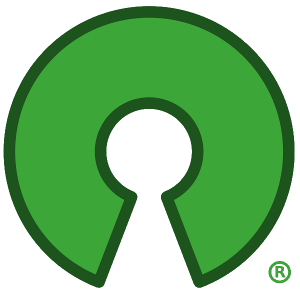Damn it… I literally just found draw.io like 2 weeks ago.
It’s still open source. It’s just that development has ceased.
Just wondering, if a project switch to close source from open source, all the donation to the stage when it’s open source will be sent back to the donor or counted as shares?
They count as…gone! Gone to develop what’s been open source until it becomes closed source. As I think it should be, because what you helped to develop with your donation is still there.
TL;DR: Competitors in integrating with Atlassian are not allowed to incorporate code after the change because they used it in free add-ons, which caused the official integration (a paid add-on that is the sole source of funding) to be labeled a scam by a review in late August.
Plus, the thing was never really open source anyway:
draw.io is also closed to contributions, as it’s not open source. We follow a development process compliant with our SOC 2 Type II process. We do not have a mechanism where we can accept contributions from non-staff members.
Open source means that the source code is…open, that everyone can view and use it, it doesn’t mean that everyone can contribute to it. Or am I wrong?
What you a referring to is often called “source available”
People usually use the open source definition from the Open Source Initiative. That definition does have extra requirements:
Thanks for the clarification!
Damn great username btw 👌
@peregus yes, wrong. Being “open” doesn’t mean just “readable”. Imagine an open bird cage, not just an open book. It needs to be open to fly free.
The definition of the worlds open source seems to me that the source is readable by everyone. If you mean something different like @stochastic_parrot@sh.itjust.works said, then that’s something else.
That is usually referred to as “source available” and doesnt fall into the category of open source.
@peregus why do you think so? My view is backed by the two official definitions from OSI and FSF, plus the wording of specific licenses. Your definition is backed by… linguistics? While ignoring the second (open cage) meaning of “open”? Quite strange narrow definition, don’t you think? And at odds with everyone who has been doing open-source for decades.
Then nvidia produced Open Source code then I guess?
(There were Repos, but everything was Copyrighted. Noone was technically allowed to use it afaik, but it was still there about some AI stuff back then)
Chatgpt please refactor this code entirely but keep the function input and output the same.
Noone was technically allowed to use it
There is your answer. draw.io can be used by everyone and for almost every purpose, so the situations aren’t even remotely the same.
@ReakDuck I’m sure nvidia would like that, this “open source” label is good for marketing. They just want to avoid being actually open. Have the cake and eat it, like many businesses do.
Whatever, I’m using it regardless of what shitty commercial alternatives tried to be shoved down my throat. If Draw.io goes shit I’ll just switch to ditaa
Thanks for the note on Ditaa. I didn’t know it existed but I love the idea of rendering bitmaps from ASCII, especially on the web. It’s like Mermaid but the original syntax is a diagram in and of itself!
Like the author writes:
There is a number of formats that are text-based (html, docbook, LaTeX, programming language comments), but when rendered by other software (browsers, interpreters, the javadoc tool etc), they can contain images as part of their content. If ditaa was intergrated with those tools (and I’m planning to do the javadoc bit myself soon), then you would have readable/editable diagrams within the text format itself, something that would make things much easier. ditaa syntax can currently be embedded to HTML.
I don’t see a CLA so this is somewhat surprising that all ~30 contributors would be okay moving away from open source.
Unless this was a unilateral decision
Apache is a permissive license, plus:
draw.io is also closed to contributions, as it’s not open source. We follow a development process compliant with our SOC 2 Type II process. We do not have a mechanism where we can accept contributions from non-staff members.
This was added wayyyy before. OP is making this much more of a deal than it actually is.
@Aatube I don’t see how OP is making it a big deal. That post is merely stating facts, as confirmed by the company representative in the GitHub discussion. Yes, the project was never “open-source-like governed”, but it was technically open-source software. With the additional restriction in the license it’s not anymore. All pretty theorical, but nevertheless true.
“No longer open source” is factually true. However, it gives the impression that they did something much more drastic. It would be much better to just get to the point with something like “draw.io forbids competitors for Atlassian integration from using their code”.
Up until a year ago, the README explicitly said they didn’t claim to be an open source project: https://github.com/jgraph/drawio/commit/8906f90ac0cc50a0c6da77c28cf9b2b2339277b1#diff-b335630551682c19a781afebcf4d07bf978fb1f8ac04c6bf87428ed5106870f5L10
Is there an actual open source alternative to visio?
When excalidraw was mentioned in another comment I think it would also be worth to mention tldraw even though I don’t kniw whether it can be counted as an replacement since I never used draw.io.







